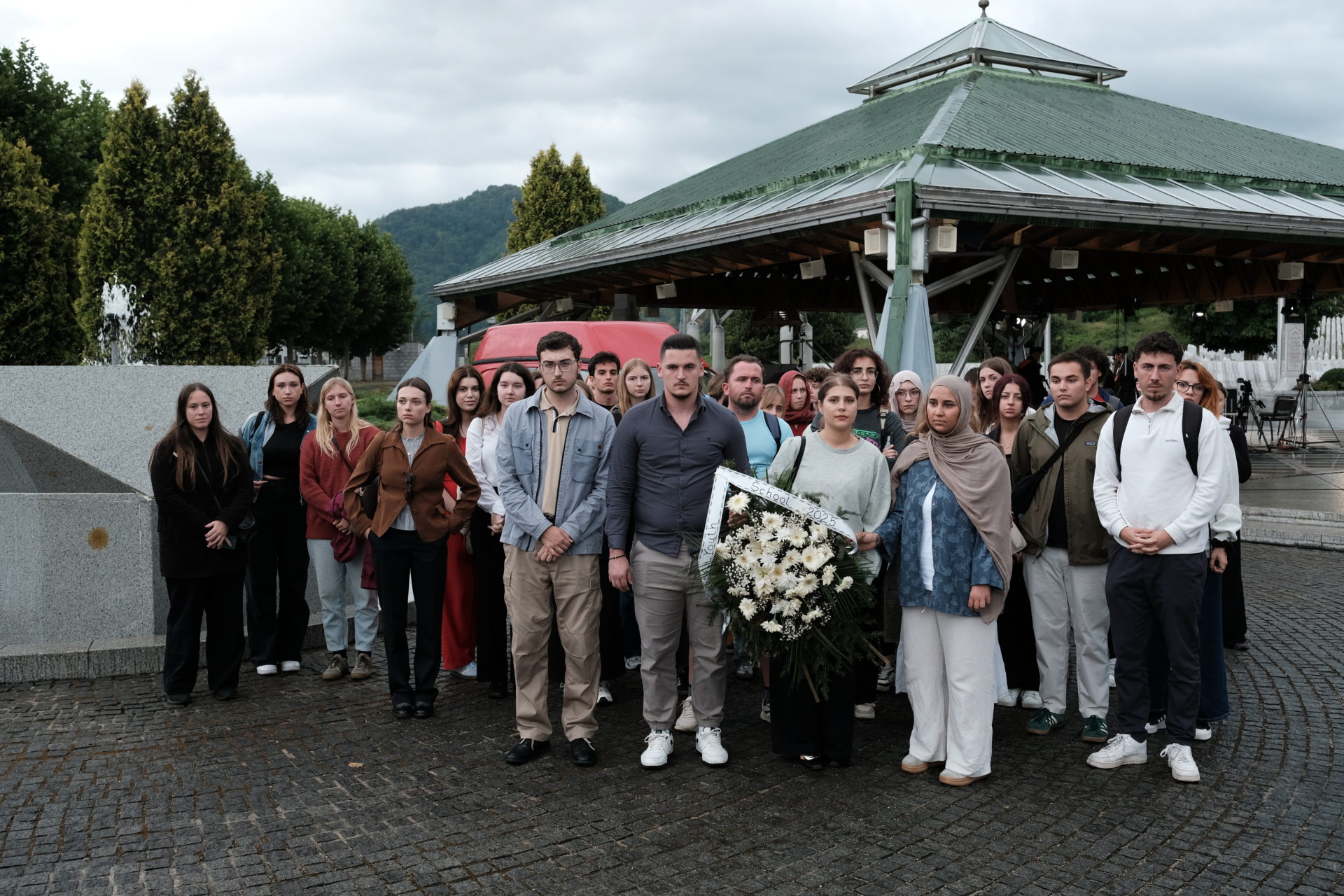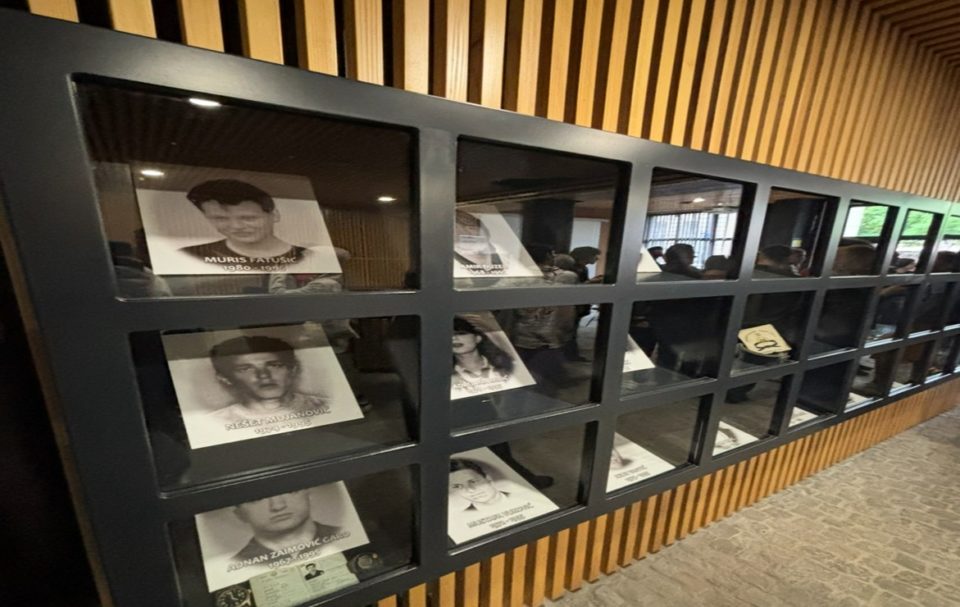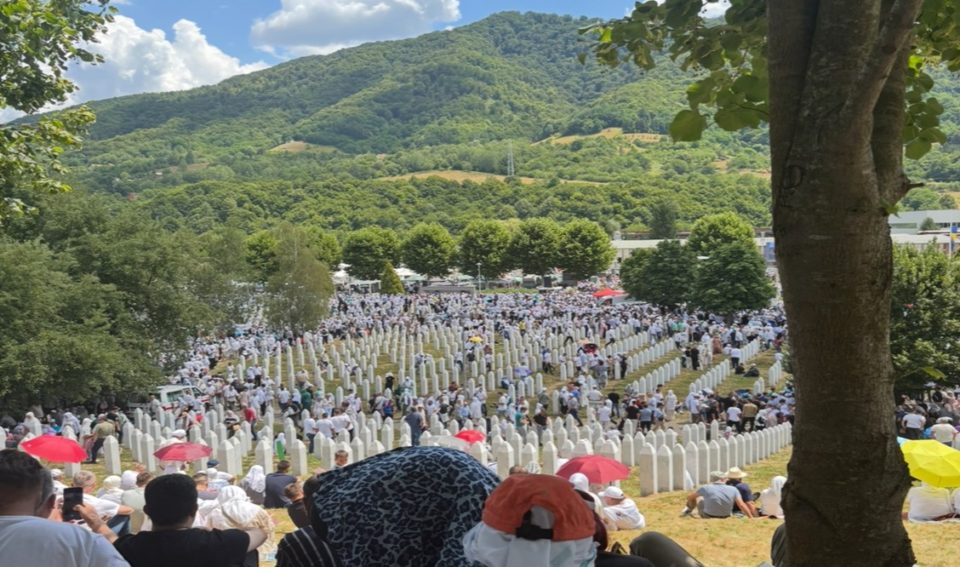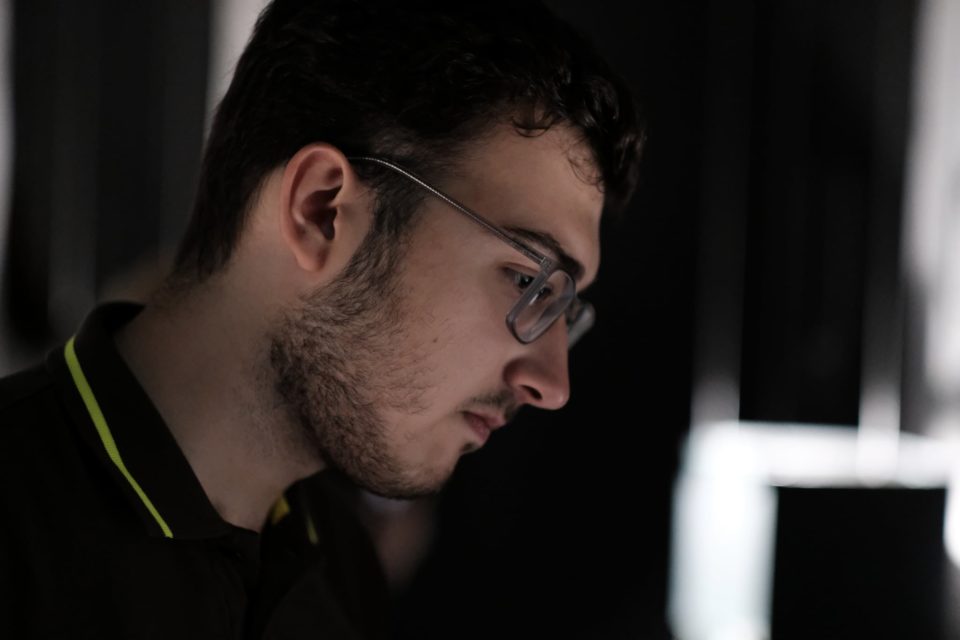
As the son of two families that survived the Srebrenica genocide, the opportunity to spend a week delving into the consequences of the genocide, its legacy, and the continuous efforts to preserve the memory of its victims were especially important to me because I was joined by peers from all over the world. I knew that the experience would be emotionally taxing, and yet invaluable. For however much I might have worked on raising awareness around Srebrenica and the Bosnian war, in other contexts, nothing could replicate being on the ground and witnessing how it was approached, taught, and remembered during its critical 30th anniversary.
The Youth School encompassed a wide range of activities designed to aid its participants, 40 this year, contemplate Srebrenica and what needs to be done to enable peacebuilding, prevent additional mass violence, and foster cross-cultural connections within Bosnia and the wider world. Our first two days involved a series of introductory workshops at Europe House in Sarajevo, the opening of the exhibition MAJKE | MOTHERS, which honored the Mothers of Srebrenica and Žepa Enclaves, and an international conference Srebrenica 1995-2025: Dealing with the Past and Bosnia’s continued post-war rebuilding efforts. Afterward, we traveled to Srebrenica itself, spending the next four days in or near the town, with the official commemoration and burial of seven newly identified victims at the Srebrenica-Potočari Memorial Center being our final main event.
Reflecting on this involvement, many experiences surface as invaluably educational thanks to what they revealed about Bosnia and myself. In honor of the Youth School’s end, I would thus like to discuss some of the key moments of the program and my takeaways from them. While I could detail everything we did, three visits stayed with me the most. I turn to them now.
Youth School Highlights
On the Youth School’s third day, as we rode a bus to Srebrenica, we stopped in Tuzla to visit the Kapija Memorial and Memorial Center Kapija, which both honor the victims of the 1995 Tuzla massacre, in which an artillery attack by Army of Republika Srpska (VRS) left 71 civilians dead. Being in these spaces drove home the reality of Srebrenica not constituting an insular instance of violence within Bosnia, but rather, one of many other killings that occurred across the nation in the 1990s. Our visit to the Memorial Center was especially breathtaking in the humanity it displayed. I still remember our guide pointing us to a wall of victims of the Tuzla massacre, with photographs and personal items attached, before proceeding to point to one after the other and relay details about their lives—students on the cusp of finishing college, a couple about to marry, a baby boy. They all held so much potential to give to our world if they had not been taken from us by senseless violence. And this emerged from reading a few names.
We hardly touched the surface of all those honored within the museum, a fact that only made clearer, to me, the unprecedented scale and unimaginable horror of the violence seen in Tuzla, Srebrenica, and Bosnia writ large. Everyone killed then was someone with a rich life, loved ones crushed by their deaths, and a future filled with so much to offer. Their loss became even more immeasurable to me, and therefore, commemorating it became even more important.

Later, on our fourth day, we heard from Dr. James Smith of the Aegis Trust as he discussed his organization’s work in fomenting commemoration of and education on the Rwandan genocide in Rwanda. As someone who works on educational initiatives related to Bosnia in the United States, having him break down how the organization creates reconciliation via educational means was inspiring, and it caused me to think even deeper about the work that I do and what it means to teach about genocide. More critically, his lecture demonstrated how education can serve as a means of reconstructing post-genocide societies, and if done right, can produce true interethnic connectivity and progress beyond—while still remembering—hard histories. It accordingly reinforced my belief that education constitutes one of the most important paths to creating a truly healed Bosnia. Despite the many hurdles that stand in its way, I hope to continue striving for a better instructional system in the country, especially vis-á-vis topics like the 1990s, alongside improved instruction on genocide internationally.
Finally, on July 11th, the participants arrived the commemoration of the Srebrenica genocide at the Srebrenica-Potočari Memorial Center. It is difficult for me to write my thoughts on the ceremony because I have so many, and it feels hard to express them properly. So I will keep things brief here. There is something impossible to convey, and yet unimaginably vital, about taking part in an experience like the PCRC’s Youth School that allows you to stand a few feet away from your paternal uncle’s grave—who you are named after—as tens of thousands of individuals, of all identities, stand around you and commemorate his life, alongside those of the countless others murdered with him. In that moment, I could feel heartbreak all around me and within myself—of the uncle whose love I will never come to know on this earth; of the father, mother, and so many other relatives who live every day marked by an unnecessary violence that brought nothing good to Bosnia; of the life I might have lived in Bosnia if its decimation did my force my family to leave it. And yet, at the same time, I felt hope. Seeing so many people stand together reminded me that we can progress and do better. With heartbreak can coexist a bright future, filled with remembrance and a striving to not repeat the past’s mistakes. We just have to try for it.

The Bigger Picture
Alongside all the lessons the above engagements taught me, when I consider my time with PCRC’s Youth School, two major messages, developed through every piece of programming we did, come to mind. First, genocide does not end when bullets stop flying. Families continue to face the pain it engenders daily—especially when their loved ones remain buried and unfound in mass graves—and often, forces around them work to purposefully ensure that they feel that hurt, whether by glorifying war criminals or denying them access to commemoration. Said otherwise, the quick violence of mass killing becomes, in the aftermath of genocide, replaced by the slow violence of time. Now, I have felt and seen this dull ache in my own family since I was born, yet participating in the program concretized the reality of how widespread, damaging, and persistent it is in Bosnia.
Yet even with this, human beings find ways to persist. I was so heartened across the Youth School to continually hear about how, despite their trauma, survivors had uncovered paths to reasserting their identities, fighting for their murdered relations, and rebuilding their communities, all of which they actively pursued without hate. And there lies the greatest takeaway from my experiences this July. Though genocide aims to decimate—produce the extinction of particular group, culture, and lifeway—its violence is never total, and there always exist ways to counter its effects, reconcile, and work toward a better future where we all, as humans, shun the horrors it manufactures. That is not to say that such work comes easily. No, the opposite. But it holds so much potential to foment needed change, and it is essential that we all, in Bosnia and globally, do what we can to both honor the victims of this brutality and generate communities resistant to its reoccurrence. We saw some of this work during the Youth School, and I have seen it throughout my time as a PCRC intern in the actions that the organization takes throughout Bosnia. And I sincerely hope that such striving sustains itself long into Bosnia’s future and that I can continue to contribute to its continuance in whatever ways I can.



